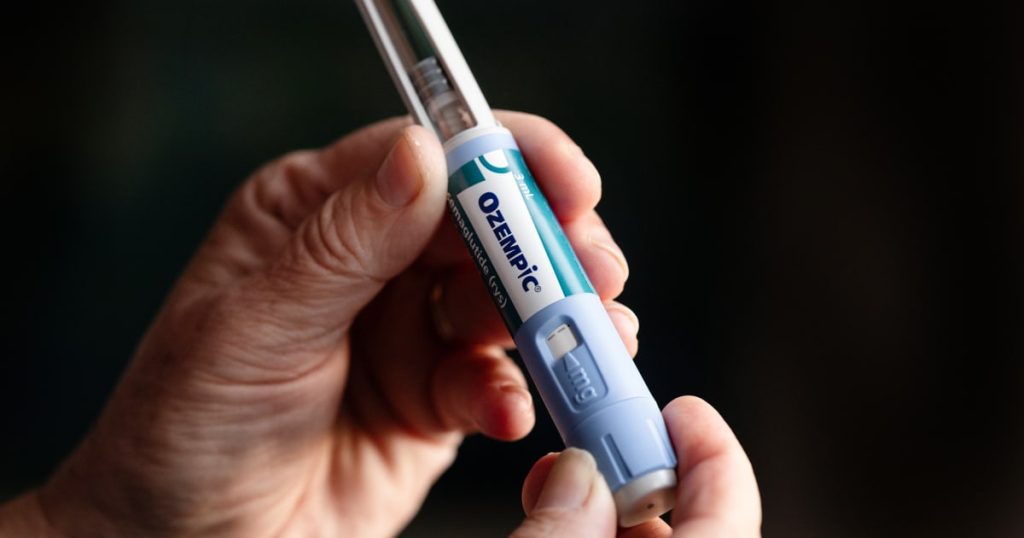Summarize this content to 2000 words in 6 paragraphs The Biden administration on Friday released the next round of prescription drugs selected for Medicare price negotiations, including Ozempic — the blockbuster diabetes drug that’s also used for weight loss. The drug has faced public backlash over its high price, fueling demand for cheaper alternatives.The list, which includes 15 drugs, up from 10 last year, is the first step in a negotiation process between Medicare and drugmakers that is expected to take place over the coming months. The new negotiated prices won’t take effect until 2027. Still, the deliberations — mandated by the Inflation Reduction Act of 2022 — face an uncertain future under the incoming Trump administration, which has remained silent on whether it supports the government program. The drugs selected to undergo negotiations are:Ozempic; Rybelsus; Wegovy Trelegy Ellipta XtandiPomalystIbranceOfevLinzessCalquenceAustedo; Austedo XR Breo Ellipta TradjentaXifaxanVraylarJanumet; Janumet XR OtezlaJuliette Cubanski, deputy director of the Medicare policy program at KFF, a nonprofit group that researches health policy issues, said the stakes for the government to get a good deal this year are high. A survey from KFF published Friday found that more than half of the public says it’s a “top priority” to expand the number of prescription drugs subject to negotiations, including nearly half of Republicans.Ozempic and similar drugs are in high demand, and as Medicare begins to cover the drugs for other FDA-approved uses, such as heart disease risk, the cost to taxpayers is expected to increase. (Currently, Medicare is barred from covering the drugs for weight loss.) “Driving a hard bargain at the negotiating table could potentially save Medicare billions of dollars in the coming years,” Cubanski said. The drugmakers will a little more than a month to agree to participate in the negotiations, or they may face tax penalties. The only way to avoid the tax is to pull the drug from the Medicare program entirely, a move that would cut them off from a huge share of the market.About 5.3 million people on Medicare used the drugs between Nov. 1, 2023, and Oct. 1, 2024, according to the Centers for Medicare and Medicaid Services.Together, the 15 drugs selected accounted for $41 billion, or 14%, of total Medicare Part D spending. When combined with the first 10 drugs already negotiated by Medicare, they account for a third of all Part D spending, according to CMS. Medicare Part D covers prescription drugs that people take themselves, as opposed to those administered in a facility, such as chemotherapy. “We have a chance to negotiate a better deal for the American people,” outgoing Department of Health and Human Services Secretary Xavier Becerra said on a call with reporters. “This is a big deal. Some folks have to cut their pills in half or skip a dose in their prescription so that they can make their prescription last longer.”Last year, Medicare reached agreements to lower prices on the 10 costliest drugs, including Eliquis, a blood thinner; Imbruvica, a blood cancer treatment; and NovoLog, a diabetes medication. The new prices for those drugs are set to take effect in 2026.Stacie Dusetzina, a health policy professor at Vanderbilt University in Nashville, Tennessee, said the inclusion of Ozempic this year is “a big deal.”“This has major budget implications for Medicare beneficiaries, Part D plans, and taxpayers because it could greatly expand the use of these drugs among Medicare beneficiaries over time,” Dusetzina said. “This could result in premium increases if the number of eligible beneficiaries started using these products for weight loss since the products need to be used chronically.”The drug industry has fiercely fought the program through lawsuits but has so far been unsuccessful.


